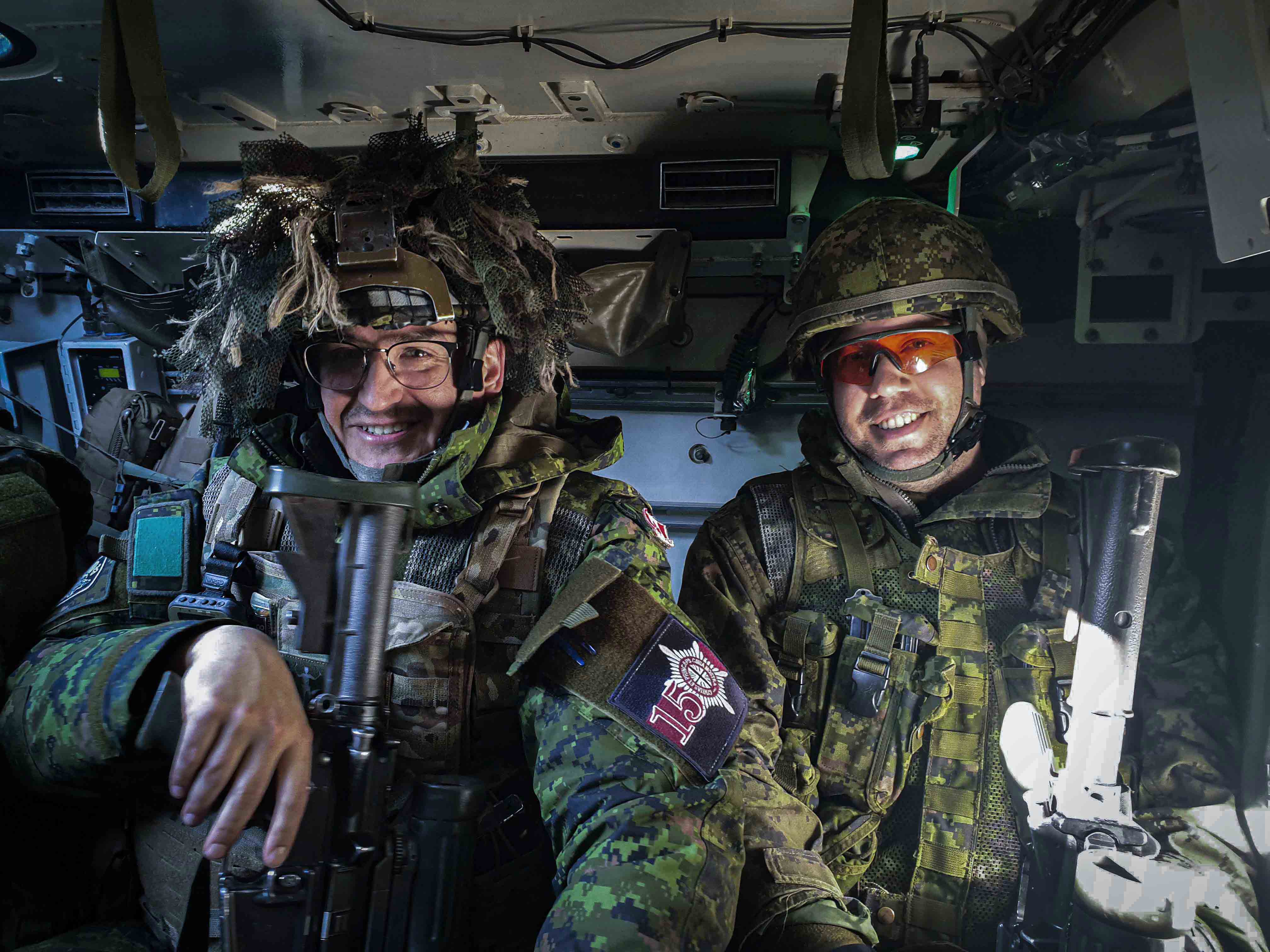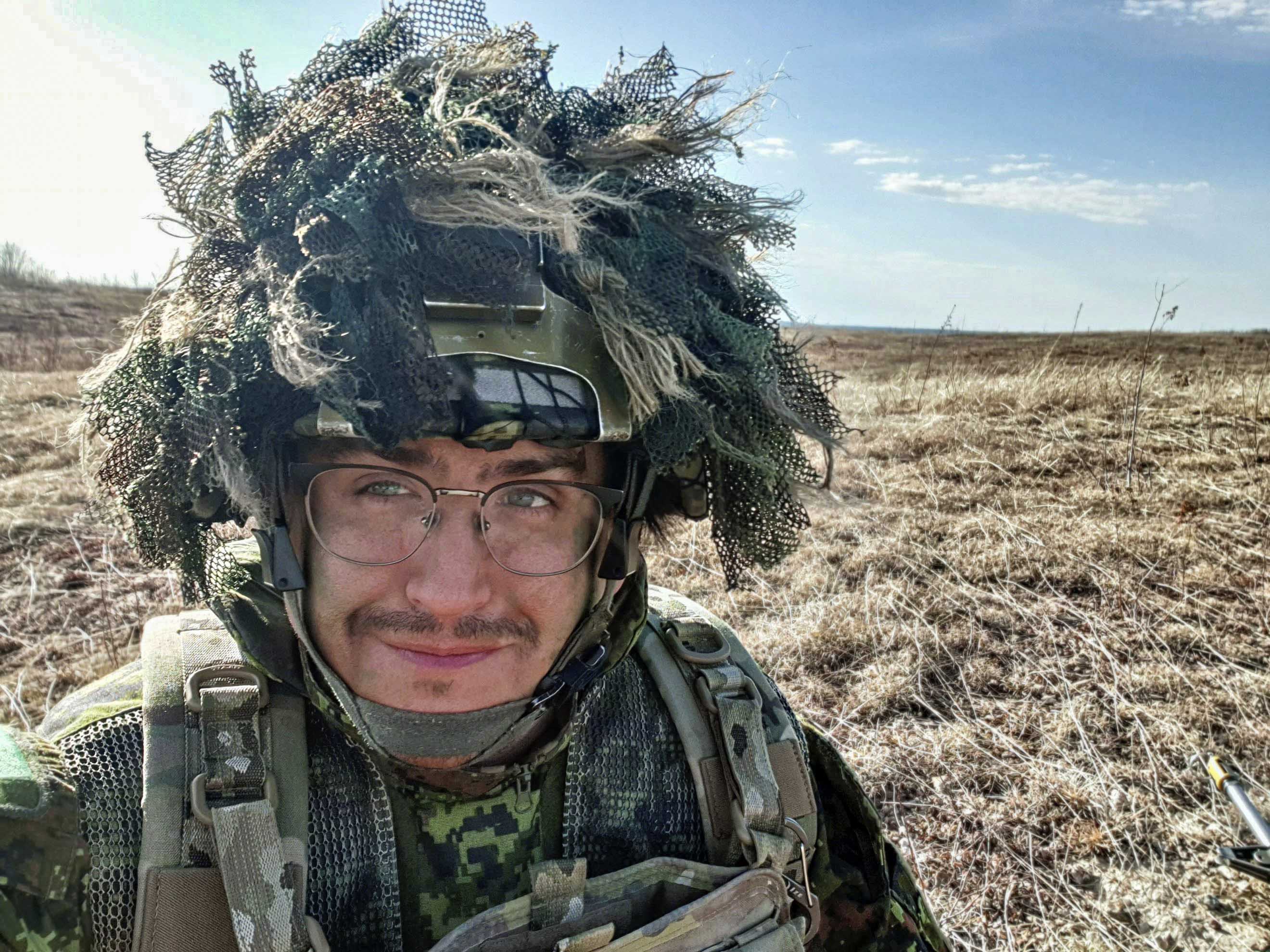Army Reserve Leadership Training: The Payoff
Article / February 15, 2024 / Project number: 24-0007
Note: to view additional photos, click the photo under Image Gallery.
By Lieutenant (Navy) Andrew McLaughlin, Public Affairs Officer, 33 Canadian Brigade Group
Ottawa, Ontario — Sergeant Justin Merrick joined the Army Reserve to serve his country. He started out with The Lincoln and Welland Regiment in 2005, then transferred to the Governor General's Foot Guards in 2017. With nearly two decades of service, he’s become an important part of his unit's leadership team and benefitted from extensive leadership training that’s carried over to his civilian life.
“When I considered the Primary Leadership Qualification (PLQ) in 2009, I was very hesitant. I didn’t think I was ready, but a few Senior Non-Comissioned Officers mentored me and pushed me towards it, and I’m glad they did."
PLQ is the first step in becoming a Section Commander, the frontline leaders who translate orders from above into direct actions on the battlefield. Once they complete PLQ, members are qualified to become Master Corporals and fill the critical Section Second in Command, or 2IC, role.
“Leadership training in the Army Reserve is unique and valuable,” says Sgt Merrick.
“In most civilian organizations leadership is a soft-skill, and you can see the effect in many industries where those in positions of power may not have been trained extensively."
The Army leadership development model is more complex and in-depth. After all, leadership in the military comes with great responsibility; most importantly the welfare of the troops under your command and fostering teamwork that produces mission success.
“The military is quite unique in that regard,” Sgt Merrick added. “My PLQ was 16 weeks of formal leadership training, which helped develop many of the core competencies I still use today."
Many corporals are hesitant to pursue this training, but Sgt Merrick knows the value of pushing forward. He attained the rank of Sergeant in 2019, becoming responsible for commanding his own section of 10 soldiers, and he’s currently on the Infantry Platoon 2IC course, “where I'm learning how to lead a platoon of around 30 soldiers."
Once he's completed this course, Sgt Merrick will be eligible to become a Colour Sergeant, which is a Warrant Officer in most Army units.
“Not only will this give me the tools required to perform my job as part of the Army team, but if I transition back to the civilian workforce at a later date, many of these skills will benefit me there.”
Leaders are integral to all organizations, he says, but even more so for an effective fighting force.
“Nothing is more important than the experience of working in very difficult and demanding situations, balancing the many and varying needs of the organization and the health and welfare of my soldiers.”
The benefits of Army Reserve leadership training pay off in the long run as transferrable skills, according to Sgt Merrick.
“This can be an extremely taxing profession at times, and many people don’t stay around for the long-haul, but it’s been the most rewarding 18 years of my professional life.”

